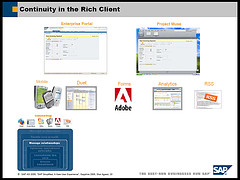(Updated)
Now that title doesn’t make a lot of sense, does it? It’s all about the same thing: Google’s model of allocating 20% of developers’ time to “doing their own stuff” as long as innovative and does NOT belong to their everyday project is becoming increasingly popular.
JotSpot defines it as a Hackathon:
“What the heck is a hackathon?
It’s a day-long event where our engineers each crank on something:
- valuable to the company
- but not what they’re “supposed” to be working on and
- that can be taken from idea to working prototype in one day
Why do a hackathon? Because even startups get into a grind where engineers are working on longer term projects and creativity can feel stalled. “
“The general rule is that projects have to be somewhat related to the company’s direction, but everyone is encouraged to work on something new and different, and in particular on something that wouldn’t otherwise make it to the top of the priority list.”
Atlassian calls it Fedex Day, except that they extended it to Fedex Week.
“The development task must be something “out of the ordinary”…. it must be deliverable in one day (hence Fedex Day – “We deliver.”). “
And there is Bubbleshare, which simply calls it .. hm.. R&D time. (Isn’t that the term reserved for the other 80%? ![]() ). I see a certain cultural influence here. Joke apart, who cares what the name is, Albert clearly “gets it”:
). I see a certain cultural influence here. Joke apart, who cares what the name is, Albert clearly “gets it”:
“You’ll get your best ideas/features from bottom-up skunkworks projects that would NEVER be “justifiable” under the company road map.”
Congratulations to all the creative teams, keep on hacking (haxing?) away.
Update (6/16): Techcrunch reports about Yahoo’s 24hr Hack Day.

 You Know Wikis Have Arrived When …. they become the feature post in your regular junk mail – this time from an Executive Recruiter firm:
You Know Wikis Have Arrived When …. they become the feature post in your regular junk mail – this time from an Executive Recruiter firm:

 The entire landscape changed today – at least for me it was today, when on the
The entire landscape changed today – at least for me it was today, when on the 


Recent Comments